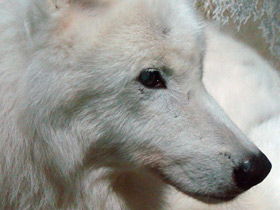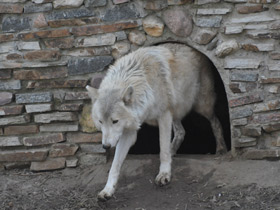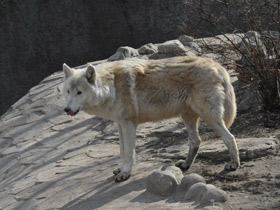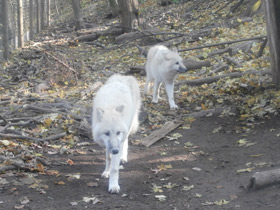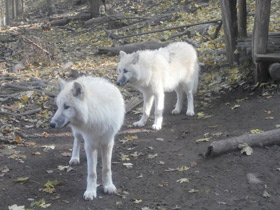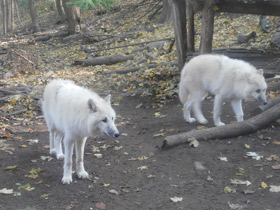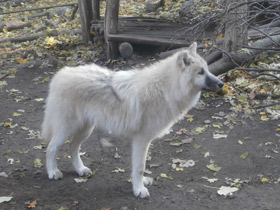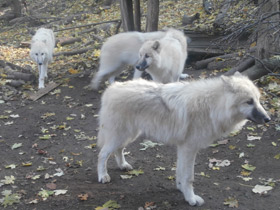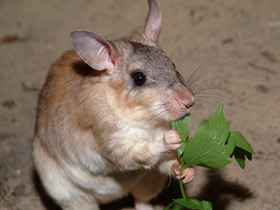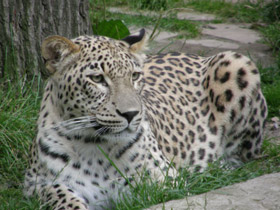Arctic wolf (Canis lupus arctos)
Arctic wolf видео
The Arctic wolf (Canis lupus arctos), also known as the white wolf, polar wolf, and the Arctic grey wolf, is a subspecies of grey wolf native to the High Arctic tundra of Canada's Queen Elizabeth Islands, from Melville Island to Ellesmere Island. Unlike some populations that move between tundra and forest regions, Arctic wolves spend their entire lives north of the northern treeline. Their distribution to south is limited to the northern fringes of the Middle Arctic tundra on the southern half of Prince of Wales and Somerset Islands. It is a medium-sized subspecies, distinguished from the northwestern wolf by its smaller size, its whiter colouration, its narrower braincase, and larger carnassials. Since 1930, there has been a progressive reduction in size in Arctic wolf skulls, which is likely the result of wolf-dog hybridization.
Description and habitat
Canis lupus arctos is a mammal of the family Canidae, subspecies of the wolf.
Canis lupus arctos is found in most of the Arctic, except where there is a lot of ice. It is about 60-80 cm long and weighs up to 80 kg, females may weigh less. They live in flocks of up to 10 individuals, feeding on hares, reindeer and other animals. Pup size ranges from 4 to 5 pups (in some related species of this wolf, 2 to 3 pups are more common). However, Canis lupus arctos is the best adapted to life: it can go for weeks without food and live in sub-zero temperatures. Temperatures in the Arctic winter exceed 50 degrees Celsius.
Canis lupus arctos has everything it needs to survive in the Arctic: a warm, wind-resistant coat, keen eyesight, hunting skills and an excellent sense of smell.
Hunting and nutrition
Canis lupus arctos usually always hunt in a herd, the only way they can catch large ungulates: musk oxen, reindeer and sometimes elk, when they have fallen into deep snow and cannot offer resistance to the herd. However, Canis lupus arctos never ambushes. If the musk oxen have already managed to defend themselves in a circle (which is most often the case), Canis lupus arctos will run around them until the musk oxen can stand it and scatter in different directions. However, even then, their hunt is not always successful.
Canis lupus arctos can live without food for weeks, but can eat about 10 kilos of meat at a time. As a single wolf cannot kill a large animal, it will hunt hares, lemmings, birds and other small animals. Lone wolves are usually young animals that have left the pack and gone in search of separate areas.
Reproduction and lifestyle
Canis lupus arctos are monogamous. In March, the female finds shelter or digs a den herself. In May-June, after two months of pregnancy, a she-wolf gives birth to deaf, blind and totally defenceless cubs. They stay with the female in her den for three weeks and only then begin to explore the outside world.
At three months of age, they begin to accompany their mother when hunting with the pack.
The Canis lupus arctos herd usually leads a nomadic lifestyle. Due to the lack of pasture, the reindeer have to roam over a vast area, covering about 2,600 km². Canis lupus arctos often follow them, travelling long distances.









